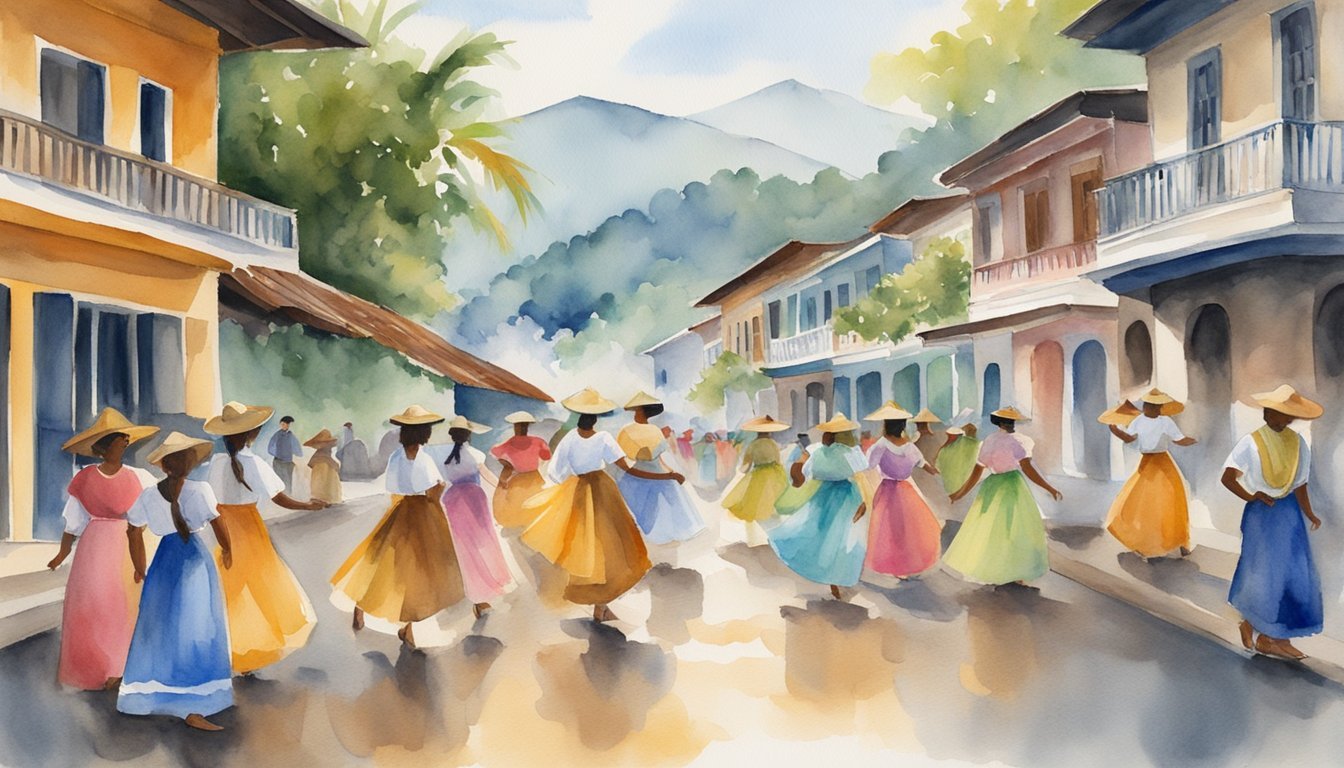Geographic Profile of Panama
Panama, situated at the junction of North and South America, serves as a vital geographic bridge. It is framed by the Caribbean Sea and the Pacific Ocean, with complex terrain that includes mountain ranges, lowlands, and coastlines pivotal to the region’s biodiversity and human activity.
Climate and Ecology
Panama’s diverse climate ranges from tropical maritime to mountainous, affecting its rich ecology. The country experiences a rainy season that typically lasts from May to November, with ecology varying from the abundant rainforests in the Darien province to the unique species flourishing in the highlands and lowlands. Environmental concerns include deforestation, affecting both its biologically diverse ecosystems and the indigenous communities relying on this environment.
Important Bodies of Water
Chief among Panama’s bodies of water is the renowned Panama Canal, an engineering marvel that connects the Atlantic Ocean via the Caribbean Sea to the Pacific Ocean. Panama’s coastline reaches about 1,700 kilometers along the Pacific Coast and 1,290 kilometers on the Caribbean Coast, supporting significant marine biodiversity. Coiba Island on the Pacific side is especially notable, distinguished by its surrounding marine park, rich in marine life.
Landforms and Regions
The geography of Panama is dominated by the central spine of mountains known as the Cordillera Central, including the country’s highest peak, Volcán Barú. Panama’s various regions, such as Chiriqui and Bocas Del Toro on the Caribbean side, and Herrera and Veraguas on the Pacific, have distinct landforms varying from pristine beaches to dense tropical forests. The dramatic Serranía de Tabasará mountain range and the plains surrounding the capital, Panama City, further showcase the country’s diverse topography.
Culture, History, and Governance

Panama is a rich mosaic of cultural influences, pivotal historical events, and a unique form of governance that has shaped its presence on the global stage. In this section, we explore the intertwined nature of Panama’s cultural legacy, its path through major historical milestones, and the specific characteristics of its political structure which govern international relations today.
Cultural Legacy and Demographics
Panama stands as a cultural crossroad with a diverse population that includes mestizos, Afro-Panamanians, and a significant array of Indigenous communities. Panama City, the vibrant capital, and Colón are bustling urban centers where these cultures blend. Spanish is the predominant language, yet Indigenous languages persist within the various tribes. This cultural tapestry is also reflected in the predominant religion, Roman Catholicism, although many other faiths are practiced.
Historical Milestones
Panama’s history is marked by significant events such as the Spanish exploration and subsequent colonial era beginning with Balboa’s arrival. The country’s narrative evolved through its separation from Spain and later from the Republic of Gran Colombia. Another major historical event includes the construction of the Panama Canal, heavily influenced by U.S. involvement and the agreement to transfer control of the Canal Zone back to Panama. The dictatorship of Manuel Noriega further illustrates a time of political turbulence.
Political Structure and International Relations
Governed as a presidential representative democratic republic, Panama sees the President and Vice President as the heads of state and government, with a multi-party system in place. The U.S. dollar runs alongside the balboa as the official currencies, hinting at the country’s close economic ties with the United States. With the Panama Canal as a pivotal asset, the nation has established itself as a key transportation and maritime hub. Political decisions are made within the frame of a constitution that has experienced several amendments to guide the republic.

